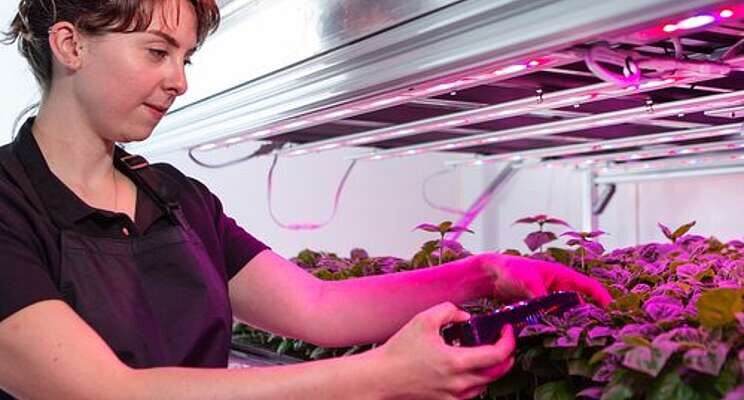Glasshouse lighting: Is it time to turn off traditional options?
Added on 09 May 2022

The trade body British Growers recently calculated that the production cost of a glasshouse grown cucumber looks set to hit 70 pence (equivalent to roughly $0.90 USD) later this year, where it previously cost around 25 pence to produce. Particularly scary when the current supermarket selling price is only 45 pence.
Of course, rising energy costs are not the only concern right now. However, prices of commodities such as fertilizers appear to be stabilizing and even beginning the slow drift back to more palatable levels. In contrast, the increase in energy costs looks set to be with us for the long haul.
To rapidly reduce energy consumption, some growers have resorted to the extreme measure of leaving their growing space unplanted during the colder months to save on heating costs, gambling on a long, productive summer to get them through.

Prototype glasshouse luminaires undergo testing at Vertically Urban's factory. Pictured here is Leon Gibson, Vertically Urban's Design Engineer, conducting in-house trials. Image sourced from Vertically Urban.
The Big Switch
While the heating and cooling of glasshouses is by far the most energy-intensive activity, the lighting of the growing area is a close second.
For years incandescent lamps were the only option for growers, although more energy-efficient options are now commonplace.
The pale orange glow of high-pressure sodium (HPS) fixtures can be seen in the night sky around many modern glasshouses and whilst more efficient than their incandescent predecessors, they are only at their best in conjunction with natural daylight. In situations where natural sunlight is in short supply, the slightly less efficient ceramic metal halide option is preferable, being more suited to longer periods of illumination.
Both options have one huge drawback: their significant warm-up and cool-down times of 5-10 minutes.
This makes them unsuitable for solutions where lighting is used intelligently, on an intermittent basis. This does not just save energy; it can promote desirable growth characteristics too.
LEDs Are Both The Present And The Future

Vertically Urban has amassed huge amounts of knowledge and data from their trials and this has been the cornerstone for the development of its glasshouse spectra. Pictured here is Phoebe Sutton, Vertically Urban's Plant Scientist, collecting data from one of Vertically Urban's in-house trials. Image sourced from Vertically Urban.
When set against the backdrop of the energy crisis, one lighting technology stands out as the obvious option for savvy growers. LED-based luminaires can offer a massive 70% energy saving compared to HPS lighting and can last up to five times longer than metal halide options.
Editor's Note: This post was written by Vertically Urban (VU), and is the second post of a two-part series. Read the first article on 5 Things Indoor Farmers Should Know When Choosing Their Grow Lights, and contact the Vertically Urban experts with questions here.
Source: Agritecture
More news















